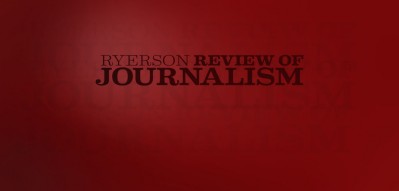ROLL TAPE: On March 7, 1991, George Holliday, general manager of a plumbing supply company, videotaped police savagely beating black motorist Rodney King. Though the videotape was fuzzy, the image was unmistakably clear: two minutes of brutality.
REWIND: Seven years ago, in 1986, ABC and NBC “‘ broadcast what they thought was footage of the fire after the Chernobyl nuclear reactor exploded. The pictures were actually of a ire at a cement factory in Italy, and were shot by an amateur.
PAUSE: In North America alone, there are more than 14 million portable video cameras, and their popularity is spreading worldwide. From the Kayapo Indians in Brazil to tourists in California, people are shooting everything in sight, and their footage is airing on newscasts with increasing regularity. Journalists are only now starting to examine the vast potential of amateur video-and the possible pitfalls.
David Bazay, the Toronto-based executive producer of national television news at the CBC, says there’s been an increase in the use of amateur video in the newsroom. “If there is an air crash and we have no professional footage, we start looking for amateur footage.” The CBC always informs viewers they are watching video shot by an amateur.
Bazay says one difficulty i verifying the authenticity of amateur footage. Walter Porges, the director of news practices for ABC, discussed the fake Chernobyl fire footage in a 1986 interview with the Los Angeles Times. “Somebody contacted our Rome bureau, saying ‘I have pictures of the reactor showing smoke,’ and one of our people went to look at it, and from the pictures, you really couldn’t tell whether it was or was not. There was not a sign that said Chernobyl Nuclear Reactor.”
The visual quality of amateur footage is also becoming more professional. In 1987, when East German pilot Matthias Rust made a surprise landing in Moscow’s Red Square, an amateur video photographer was there. This footage was so well shot that Ted Koppel neglected to include it in his 1989 documentary, “Television: Revolution in a Box.”
In an interview prior to the documentary’s airing, Koppel said, “Frankly, I
did not realize that was shot on a home video camera.”
Large networks particularly like amateur recordings of natural disasters. On October 17, 1989, Oklahoma tourists Debbie and Thomas Kelly were in San Francisco when the earthquake hit. Their spectacular footage of a red car driving off the broken section of the Oakland Bay Bridge was replayed continually on networks and became the dominant image of that disaster.
A recent example of amateur video use in Canada was a CBC item about the attempted suicides among Innu youth at Davis Inlet. The amateur portion, showing youths high from sniffing gasoline, was given to CBC reporter Brenda Craig by an Innu leader. Its disturbing images focused worldwide media attention on this isolated community and forced the Canadian government to respond to the crisis. Even though all the networks use amateur video, the majority of the amateur footage we see is broadcast by local stations. This is the footage of four car pileups and two-alarm blazes. John Thornton,
chief assignment editor for “Citypulse News” in Toronto, says he will use amateur video “whenever it’s available,” as long as the “quality of the event and the quality of the footage is good.”
Some media organizations use amateur video in truly innovative ways. New York-based Globalvision is placing small portable Hi-8 cameras in the hands of local residents in countries across the world. Globalvision has already produced one Emmy-winning show, “South Africa Now,” shown on PBS in 1988. Soweto residents were given cameras-at a time when foreign news crews were restricted by censorship laws-that they used to tell the story of the townships from their insiders’ perspective.
Globalvision is planning a weekly television newsmagazine called “Rights and Wrongs” to air this spring on PBS. Don’t expect to see a Dan Rather signing off from the beaches of Somalia. Be prepared for unfiltered stories told by ordinary people in Bosnia, Kurdistan, Myanmar, Tibet and other places; in a rare departure from convention, the third eye of the reporter is being replaced by the activist eye of the citizen-controlled camera lens.
The difficulty in assessing the impact of amateur video is that there is so much of it out there, some of it benign, some of it brilliant and some of it brutal.
The Rodney King footage is a vivid example of the latter. It was a visual sledgehammer. Holliday’s accidental recording jolted consciousness and made them chew over the news rather than swallow it whole. It was also a catalyst, forcing news organizations, and all of us, to address the state of race relations in North America.
This is amateur video at its best: a recording of an important fragment of reality. At its worst, amateur video is voyeurism, littering tabloid news shows such as “Hard Copy,” “I Witness Video” and ‘A Current Affair.”
But all amateur videos, whether treasure or trash, create issues that news organizations must confront. Authenticity, the right to privacy and the ethics of using footage supplied by people who actually participate in the event, are all aspects of amateur video that are creeping into the fast forward world of television news. Maybe it’s time to slow the tape down and take a closer look at the big picture.
Like RRJ on Facebook. Follow us on Twitter.
Share on facebook Share on email Share on twitter Share on favorites More Sharing Services
LEAVE A COMMENT
Name
Message
About the author
Sudha Krishna was a Senior Editor for the Spring 1993 issue of the Ryerson Review of Journalism.
